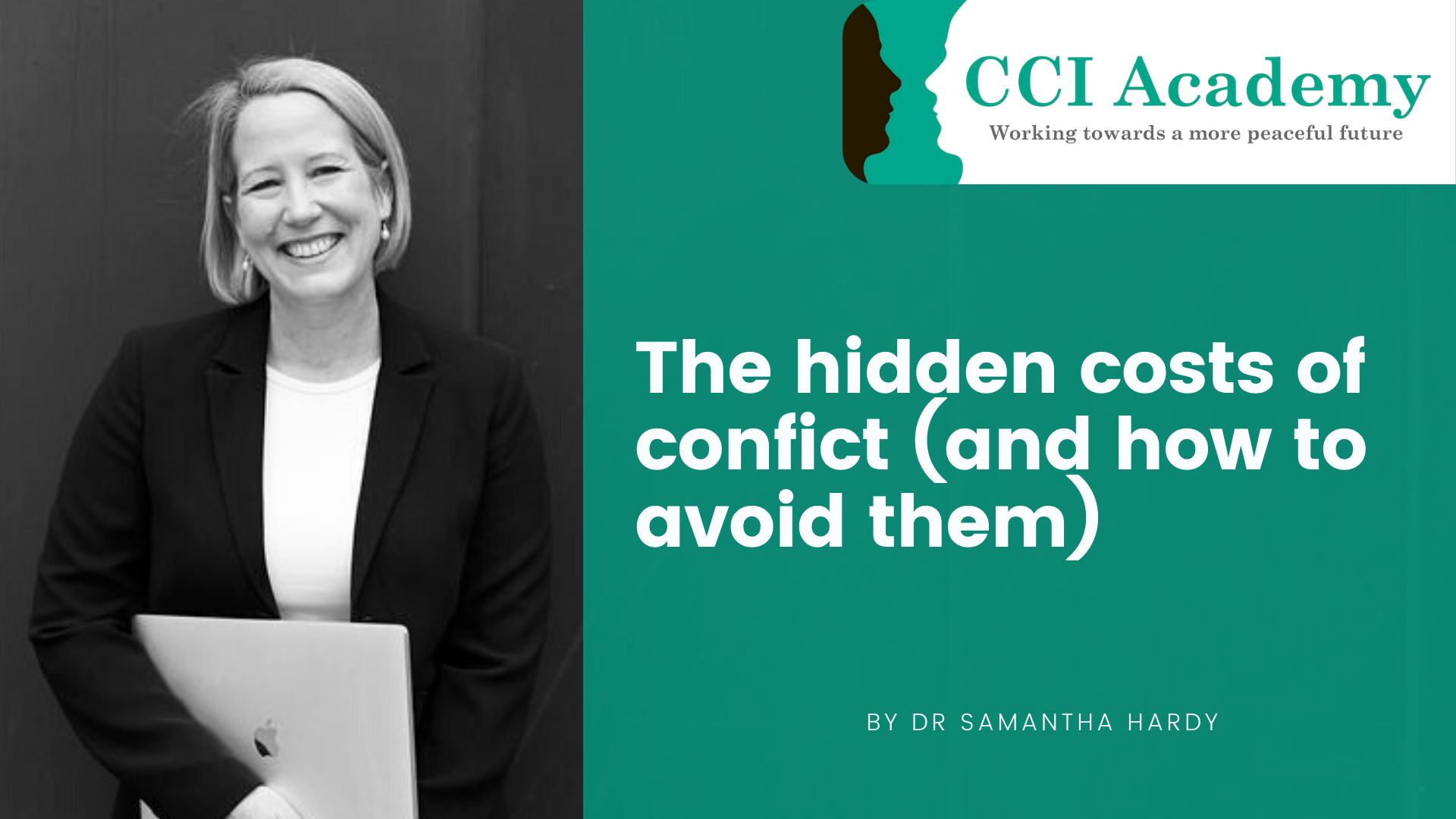
Conflict can arise within any organisation, no matter how harmonious it may be. Conflict within the workplace is one of the largest avoidable costs to any business, and yet, it is perhaps the most overlooked. In fact, the cost of conflict to the economy is estimated to be in the tens of billions each year. In this article, I uncover four of the major hidden costs of conflict, how they could affect your organisation, and how they can be avoided.
The hidden costs of conflict
- Employee turnover
The process of recruiting and training new employees is not only time-consuming but costly. In fact, estimates show that the cost of replacing an employee can be as much as 50 – 60% of their annual salary. Recruitment costs are not limited to advertising and interviewing but are also contributed to by the 8 – 12 weeks it takes to train a new employee, and another 4 – 8 weeks before they reach full productivity. Unfortunately, workplace conflict is a substantial contributor to employee turnover and staggeringly, staff turnover within the first 12 months of employment costs the Australian economy an average of $3.8 billion every year.
“80 per cent of staff turnover is related to unsatisfactory relationships with the boss,” says Dana Kennedy of the Australian Institute of Management (AIM). “In light of labour and skills shortages now faced by Australian workplaces, this statistic is significant.”
- Absenteeism
On average, every Australian employee takes off 8.8 unscheduled days of leave each year. That figure costs the Australian economy an estimated $44 billion per year. Genuine sick days, however, are only part of the equation. According to The State of Mental Health in Australia Report (2014), one in five employees (21%) take time off due to feeling stressed, anxious or depressed. What’s more, this figure more than doubles to 46% when employees report feeling that their workplace is mentally unhealthy. Employees who feel unsupported at work or are facing conflict which they don’t expect to be resolved effectively, are much more likely to call in sick. The snowballing effects of absenteeism include loss of productivity, increased workloads, low morale and poor work quality.
- Lost productivity
Although difficult to calculate, lost productivity is perhaps the largest hidden cost of conflict in the workplace. Losses in productivity arise for a range of reasons, from disengaged employees who underperform, to time wasted by managers in conflict management scenarios, to absenteeism and staff turnover. Research suggeststhat between 30% and 50% of a manager’s time is spent managing conflict within their teams, whilst disengaged employees cost their workplaces money in reduced productivity and may contribute to an increasingly toxic workplace. A study by Accountemps found that the average CFO spends 15% of their time managing conflict in the workplace, the largest contributor to which is personality conflicts between staff.
- Legal costs
Workplaces with less than satisfactory conflict management processes in place not only suffer from the costs of reduced productivity and higher turnover but an increased risk of legal action from disgruntled employees. According to lawyer and workplace dispute specialist, Kelly VanBuskirk, an employee’s motivation to take legal action is often rooted in principle rather than the desire to walk away with a cheque in hand.
“Many organisations have gaps in their ability to facilitate conflict resolution,” says VanBuskirk. “As a result, the employee may come to the conclusion they have no choice but to look outside the workplace for a solution.”
How to avoid the costs, save money, and improve revenue
Although it’s impossible to avoid conflict entirely (and in fact, conflict managed well is something organisations can actually benefit from), there are many ways in which organisations can take a proactive approach to conflict and avoid the hidden costs associated. These include:
- Conflict management training for leaders and employees
- Having effective conflict management policies and strategies in place
- Conflict management coaching (provided by an external specialist or by trained managers)
- Mediation, when conflict arises
Conflict management training, in particular, should be completed by the managers and leaders within the organisation, but ideally, should also be undertaken by all staff. Having all staff competent in conflict management can save an organisation a great deal of time, prevent absenteeism, reduce the likelihood of legal action, and improve productivity by encouraging employees to be more motivated. Effective conflict management training can also reduce attrition, increase the longevity of skilled workers in an organisation, and better prepare them for leadership roles in the future.
“It’s unrealistic to expect workers to get along all the time,” says Mike Steinitz, executive director of Accountemps. “But not every issue needs to be escalated to management. Employees who can properly handle conflict with tact and diplomacy are in a better position to assume leadership roles in the future.”
In the event that conflict arises and is unable to be dealt with effectively within the business, it is critical to deal with it professionally and swiftly, to avoid further escalation of the situation. Professional conflict management coaches and mediators can help to resolve conflict, maintain employee morale and prevent the likelihood that many of the hidden costs of conflict will arise.
Conflict in the workplace does have a silver lining, despite the minefield of hidden costs associated. In fact, not only can better conflict management practices save an organisation money, they can also help when it comes to making money. Conflict, when managed well, can offer leaders and employees alike an opportunity to learn, grow, and develop. Effective conflict management can enhance the productivity and profitability of any organisation.

